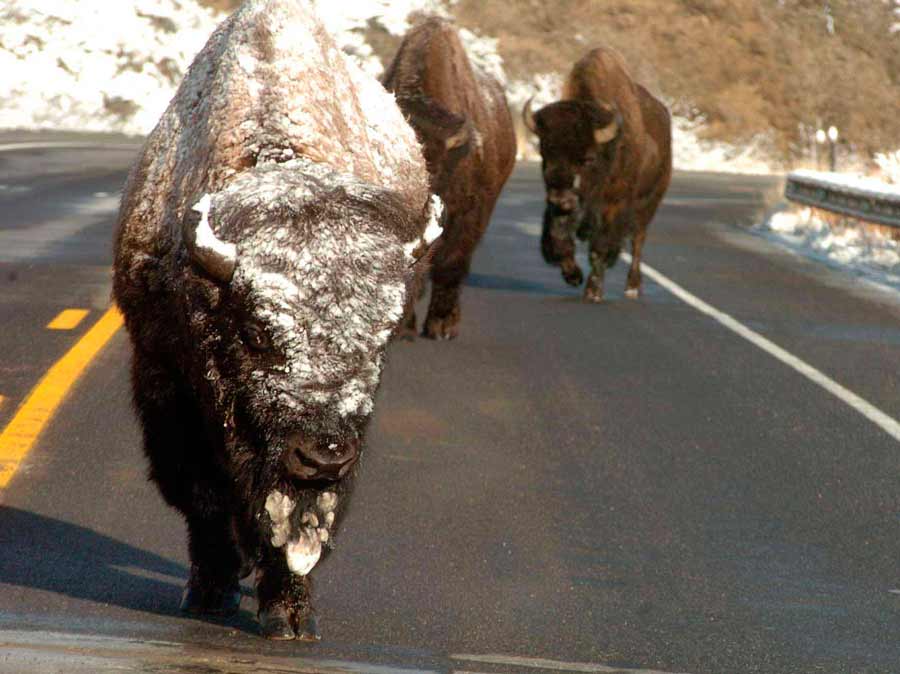A trio of bison make their way along a highway near Yellowstone National Park. (Ruffin Prevost/Yellowstone Gate – click to enlarge)
From Staff Reports
With the arrival of spring weather, warmer temperatures and the first shoots of green grass, animals are on the move from their winter ranges to their summer haunts in Grand Teton National Park.
Herds of elk recently moved off the National Elk Refuge and fanned out across the sagebrush flats, according to a statement released by the Grand Teton public affairs office.
Elk were spotted moving just north of the Gros Ventre River and along both sides of Highway 26/89/191. Several groups of elk began spreading across snow free areas in the park earlier this month. Park officials advise that motorists should be alert for wildlife on and near park roads and drive with extra caution during the coming weeks.
As the snow recedes, bison, mule deer and moose are also making a transition from wintering areas to summer ranges. Two moose were struck and killed in a single week by vehicles just south of Moran Junction on Highway 26/89/191 in an area of dense willows near the confluence of the Snake River and Buffalo Fork River.
This section of highway carries a 45 mph speed limit day and night, and a nighttime speed limit of 45 mph is posted for the entire length of Highway 26/89/191 in Grand Teton National Park. Slower speed limits are posted in an effort to slow drivers and reduce vehicle-wildlife collisions such as those that took the lives of two moose in one week.
Many animals tend to move during low light conditions and are generally most active between dusk and dawn. Moose can be found browsing in both the sagebrush flats from Gros Ventre Junction to Moose Junction and in riparian areas near the Gros Ventre River and Buffalo Fork of the Snake River, just south of Moran Junction.
Mule deer, wolves, bears and other animals may also be encountered on or near park roads, and pronghorn antelope will soon make their way back to Jackson Hole.
Animals are typically weakened from the rigors of a Jackson Hole winter and may be forced to expend unnecessary energy whenever startled or disturbed by the presence of vehicles and humans on foot or bicycle. Park rules require maintaining a distance of 100 yards from bears or wolves and 25 yards from other wildlife, including nesting birds.
Public closures are now in effect near sage grouse leks throughout the park. Those who visit these areas must obey the posted closures to reduce disturbance to sage grouse on their seasonal mating areas. Wildlife protection closures will be in place for the next 4-6 weeks while the sage grouse are present.
Motorists are required to drive the posted speed limit and advised to be alert for animals that cross roads unexpectedly. Driving slower than indicated speed limits—especially at night—can increase the margin of safety. Collisions between motor vehicles and wildlife may result in severe damage to the vehicle, serious or fatal injuries to occupants of that vehicle, and/or death for the animal involved.
Contact Yellowstone Gate at 307-213-9818 or [email protected].

